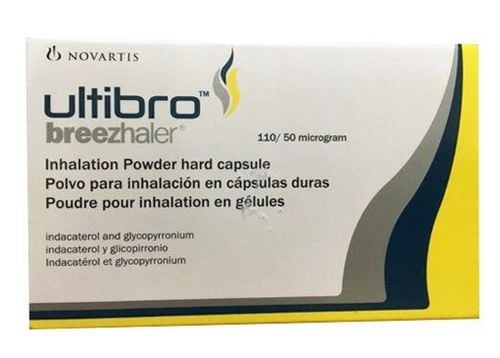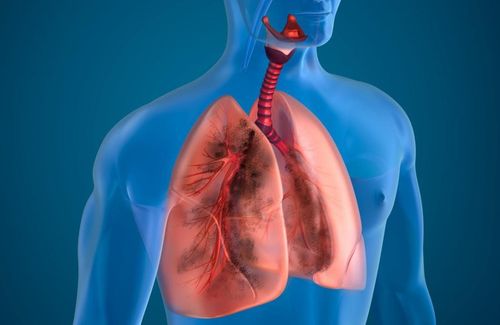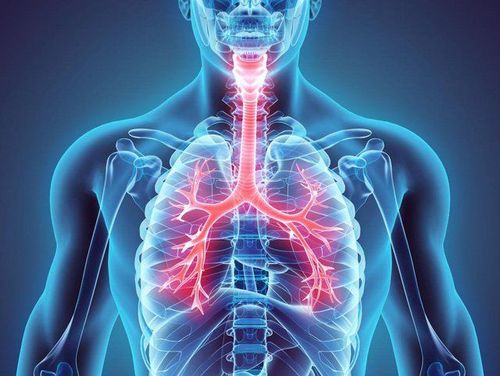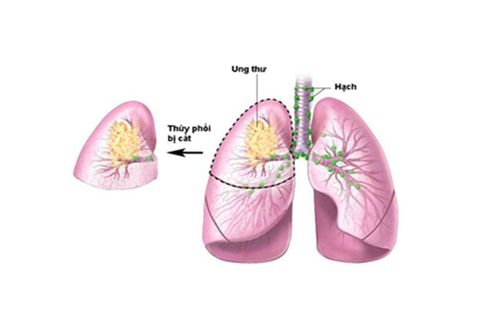This is an automatically translated article.
Chronic obstructive pulmonary disease (COPD) can have serious and life-threatening consequences because it is often associated with comorbidities.
1. Chronic Obstructive Pulmonary Disease What is COPD?
According to statistics from the World Health Organization (WHO), an average of 3.2 million people around the world die each year from chronic obstructive pulmonary disease. In the future, this number will increase, it is forecasted that this disease will rank 3rd in diseases causing human death.
Chronic Obstructive Pulmonary Disease (COPD) is a chronic obstructive pulmonary disease that impairs ventilation. Airflow obstruction progresses with abnormal inflammation of the lungs due to noxious gases and particles. The disease will gradually reduce the lung ventilation function.
Over time, the disease will get worse, making normal daily activities such as walking, exercising become difficult. In addition, the patient has obvious symptoms such as shortness of breath, wheezing, chest tightness, frequent cough, phlegm in the neck, fatigue.
Patients with chronic obstructive pulmonary disease (COPD) are divided into 3 grades:
1.1 Mild exacerbation Mild exacerbation is a patient with one of the following symptoms:
Upper respiratory tract infection Fever Unexplained cause Cough a lot, lung examination can hear crackles
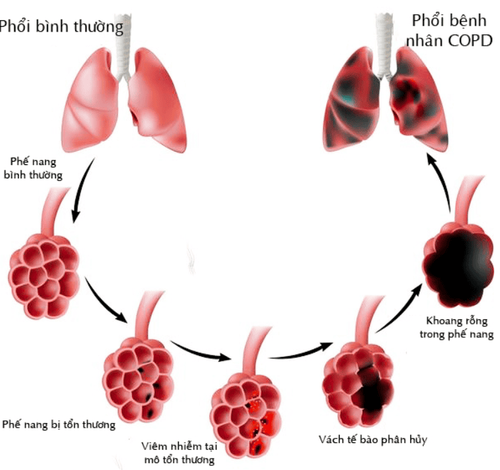
Cơ chế bệnh phổi tắc nghẽn mạn tính COPD
1.2 Moderate exacerbation The patient presents with two of the three symptoms mentioned above
1.3. Severe exacerbation When the patient has all 3 symptoms above.
2. Is chronic obstructive pulmonary disease (COPD) dangerous?
If not promptly detected and treated, chronic obstructive pulmonary disease (COPD) will cause many complications as well as serious consequences to the patient's health because they will lead to other co-morbidities.
Comorbidities are other comorbidities that often co-occur with chronic obstructive pulmonary disease. Comorbidities are preventable as well as treatable. If not detected in time, COPD and its comorbidities can cause:
COPD increases the risk of medical events COPD increases the risk of patients being hospitalized for COPD comorbidities cause death due to co-morbidities Chronic obstructive pulmonary disease is often accompanied by typical co-morbidities such as: cardiovascular disease, osteoporosis, diabetes, lung cancer, muscle atrophy, eye disease, disease metabolic, hematological diseases, weight loss, neuropsychiatric, ......

Bệnh phổi tắc nghẽn mạn tính có liên quan đến bệnh đái tháo đường
3. Causes of Chronic Obstructive Pulmonary Disease (COPD)
The biggest cause of chronic obstructive pulmonary disease (COPD) is smoking. In addition, external factors such as air pollution, exposure to toxic substances, genetics.
When exposed to long-term harmful hormones such as tobacco, toxins, polluted air will cause an inflammatory reaction in the lungs that narrows the small airways causing the destruction of lung tissue, called emphysema .
4. Is Chronic Obstructive Pulmonary Disease (COPD) curable?
Up to now, patients with chronic obstructive pulmonary disease (COPD) cannot be completely cured. However, if the disease is detected early, with intervention and treatment, COPD will help treat the disease more effectively. Help reduce symptoms, risk of co-morbidities, improve life.
Often, symptoms from chronic obstructive pulmonary disease (COPD) can be controlled with the use of a ventilator and certain oral medications that open up breathing tubes, reduce inflammation, and help improve mobility.

Khám sức khỏe định kỳ giúp phát hiện sớm bệnh lý COPD và kịp thời có phương pháp điều trị hiệu quả
5. How to prevent and improve health when suffering from chronic obstructive pulmonary disease (COPD)?
For patients with severe chronic obstructive pulmonary disease:
Must do pulmonary rehabilitation exercises, they will help the patient to resume daily activities. Long-term oxygen therapy is essential to ensure the patient's survival. People with COPD need to have a healthy diet such as eating thin, hot, and soft foods for easy absorption. Daily diet must be full of nutrients, add more fiber such as juices, fruits, green vegetables. Elderly people with chronic obstructive pulmonary disease (COPD) often feel tired and lose their appetite, so to avoid malnutrition, it is advisable to divide up many small meals a day for the patient. Eat slowly, chew well, avoid using foods or drinks that cause bloating or have stimulants.
Adhere to taking the medicine exactly as directed by the doctor. Periodic examination according to the instructions of the doctor to control the disease as well as health. Prevention of Chronic Obstructive Pulmonary Disease (COPD):
Don't smoke. Wearing a mask when going out – especially with the level of air pollution in Vietnam, is extremely important. Exercise, improve health, strengthen the immune system, resistance. Regular check-ups to check your health as well as the risk of disease.

Không hút thuốc lá có thể giúp mọi người tránh xa bệnh lý COPD
Any questions that need to be answered by a specialist doctor as well as customers wishing to be examined and treated at Vinmec International General Hospital, you can contact Vinmec Health System nationwide or register online HERE.




